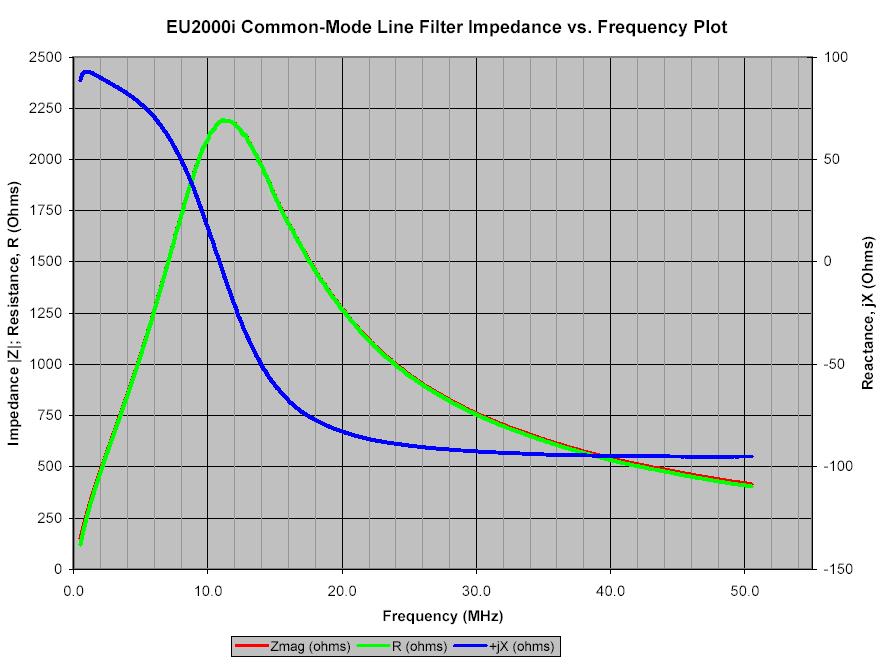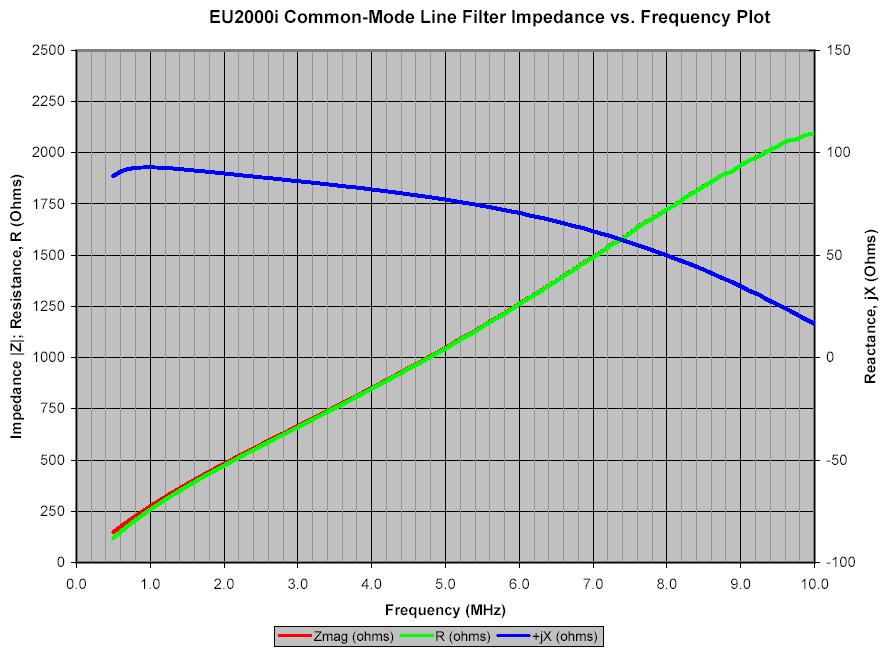The Problem:
When operating portable with the Honda EU2000i generator, I had some
trouble with RFI pickup
on 10 and 15 meters. Since I was just using the generator to run my Drake L-7 amplifier (I
run my
FT-847 from the truck battery), I was able to do A/B tests with and without the generator
very easily.
With the generator running and no extension cord connected, there was no discernable
increase in
noise above the baseline "no generator" noise floor. This indicated that there
was very little
direct RF noise radiation from the EU2000i (in this case, the antenna, an R7000 vertical
was about
30' from the generator). With the extension plug into the generator, but not the load,
there was a
substantial increase in RFI pickup on 10 and 15 meters. This indicated that the EU2000i
was exciting
RF noise currents on the extension cord which in turn was radiating the noise. Connecting
the other
end of the extension cord to the rig (in this case the power supply for the Drake L-7
which was in-line
between the FT-847 and the R7000) increased the noise still further. This was likely due
the fact that
the coax shield coming from the R7000 and the antenna support mast weren't adequately
decoupled
from the counterpoise of the R7000. Placing some small "air wound" choke loops
in the extension
improved things somewhat, but even in the best case arrangement of the extension cord,
hash from
the generator was still S5 to S6.
The Solution:
A good common-mode choke was needed to go on the output of the
EU2000i. The idea is to
insert a very high RF impedance between the noise source and the equipment such that noise
from the generator would be attenuated significantly. Luckily, I had a couple of Fair-Rite
Products
FT-240-43 ferrite cores in my junkbox.. As it turns out the material is ideal for doing
EMI suppression
in the upper HF region (20 to 30 MHz). To make the common mode choke, I wound 5 turns of a
trifilar bundle consisting of two #12 AWG stranded conductors for the line and neutral,
and one
18AWG stranded conductor for the safety ground. Measurements with the MFJ-269 impedance
analyzer indicate that each toroid should provide significant common mode impedance in the
20 to 30 MHz range. I packaged the whole thing in a gray PVC Cantex junction box. (see
photo).
To test the effectiveness of the choke, I placed the generator right next to the Nott Ltd
BB screwdriver
mounted on the back of my truck and then routed the extension cord so that it ran parallel
to my
coax for ~ 10 feet. With this arrangement, the RF hash from the generator was just shy of
S9 on
15 meters. Adding the choke dropped the noise ~20dB (as confirmed with a calibrated step
attenuator). Moving the extension cord away from the feedline dropped the noise still
further (~S3).
Finally, I placed a common mode RF choke (50 type 73 beads over ~12" of RG142) in
series
with the antenna feedline at the output of the L-7 amplifier. This dropped the noise down
still
further to the "no-generator" baseline.
The figures below show the actual common-mode impedance of the
completed filter as measured
on an HP8753C Vector Network Analyzer. As you can see, the type 43 material chokes provide
an almost purely resistive impedance with useful choking impedance from 3.5 to 30 MHz.

